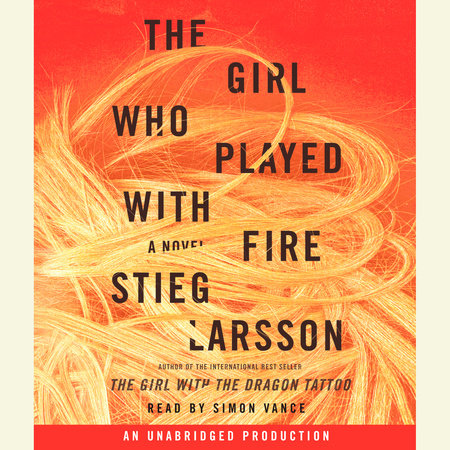The Girl Who Played with Fire Reader’s Guide
By Stieg Larsson


1. Have you read The Girl with the Dragon Tattoo? How did your knowledge—or lack of knowledge—about that novel affect your reading of this one?
2. Discuss the prologue. What did you think was going on? At what point did you fully understand it?
3. On page 26-27, Larsson writes, “Within mathematics, assertions must always be proven mathematically and expressed in a valid and scientifically correct formula.” What does this have to do with the plot of the novel? Why is Salander so intrigued by mathematics?
4. Outwardly, Salander is supremely self-assured. Why does she have breast augmentation surgery?
5. Ultimately, does Salander’s agreement with Nils Erik Bjurman pay off? In what ways?
6. Revenge is a major theme of the novel. Who seeks it, and what are the results?
7. Discuss gender politics as they affect the plot: the treatment of Salander, Erika Berger, Miriam Wu, Sonja Modig, and the trafficking of Eastern European women. What do you think Larsson was trying to say about the role of women in society?
8. On page 131, Berger thinks about Blomkvist: “He was a man with such shifting traits that he sometimes appeared to have multiple personalities.” Given that the reader is allowed inside Blomkvist’s head, does this seem like an accurate description to you? How is Berger right in her assessment, and how is she wrong?
9. Twice in the novel, Salander and Blomkvist refer to his assertion that “friendship is built on two things—respect and trust.” Who is a true friend to Salander? Is she a true friend to anyone? What about Blomkvist? Is he a good friend to Salander, to Berger, and to others?
10. Discuss the arrangement agreed to by Berger, Blomkvist, and Gregor Beckman. How does this benefit each of them? Does it hurt them?
11. When Dag Svensson and Mia Johansson were murdered, what was your first response? Who did you think was the killer? Who did you think was Bjurman’s killer?
12. Why does Blomkvist give Salander the benefit of the doubt, when so many others don’t?
13. When newspaper articles begin to appear featuring interviews with long-ago acquaintances of Salander, did it change your perception of her character? Discuss the nature of truth in these instances: is it possible both sides were remembering accurately?
14. Discuss Dr. Peter Teleborian. What role does he play, and why?
15. Why does Berger put off telling Blomkvist about her new job? What will the ramifications of the new job be?
16. On page 403, Salander thinks, “There are no innocents. There are, however, different degrees of responsibility.” What is the significance of this statement? How does Salander use this notion to guide her actions?
17. On page 580, Blomkvist calls Salander “the woman who hated men who hate women.” Is this an accurate assessment? How did she end up this way? How does it affect her behavior?
18. In what ways is Salander like her father and half brother? In what ways is she different?
19. Toward the end of the novel, does Blomkvist do the right thing by having Berger deliver only part of the story to Jan Bublanski and Modig? What do you think he should have done?
20. Holger Palmgren tells Dragan Armansky on page 614, “What happens tonight will happen, no matter what you or I think. It’s been written in the stars since [Salander] was born.” Why does he feel this way? Is he right? How does his inaction affect the outcome of the story?
21. Discuss the ending. Were you satisfied? What more, if anything, would you like to have had happen?
22. If Stieg Larsson were still alive, what one question would you most like to ask him?
(For a complete list of available reading group guides, and to sign up for the Reading Group Center enewsletter, visit www.readinggroupcenter.com)
Just for joining you’ll get personalized recommendations on your dashboard daily and features only for members.
Find Out More Join Now Sign In